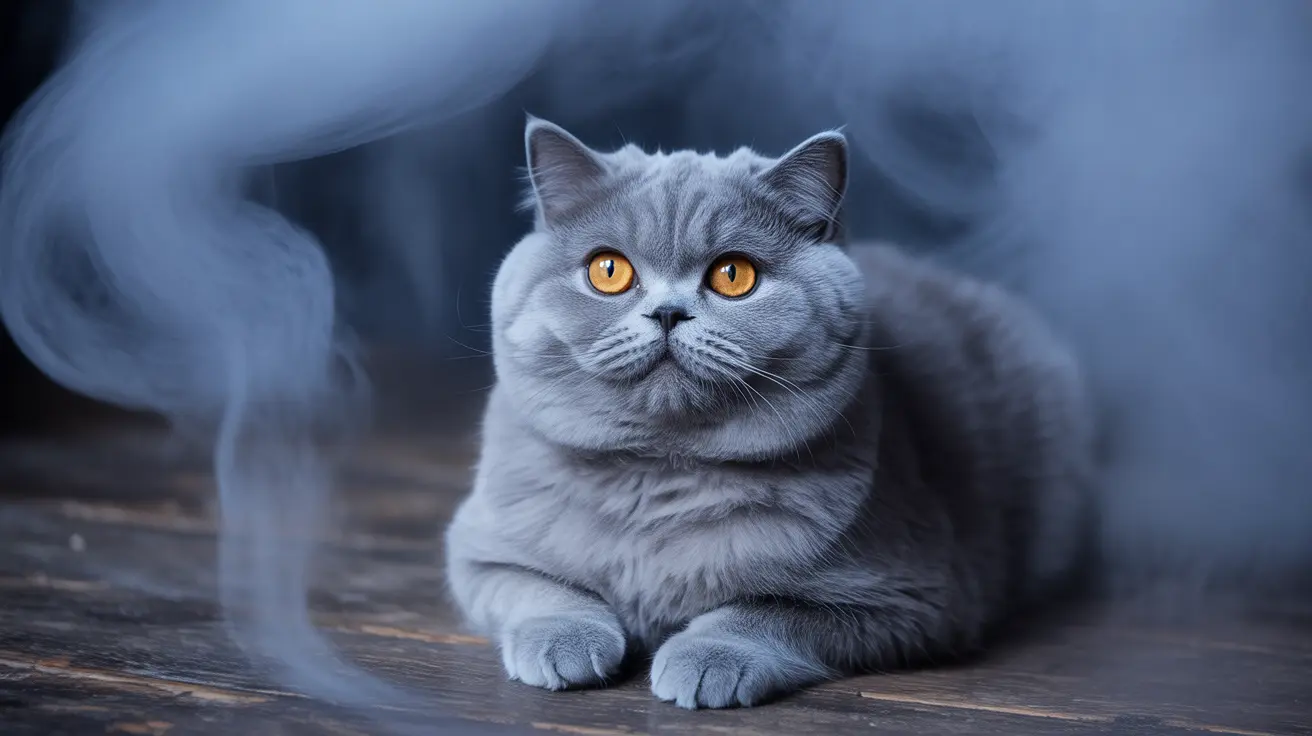From ancient folklore to modern urban legends, ghost stories about cats have captivated people's imaginations for centuries. These mysterious felines appear in tales worldwide, from the menacing Demon Cat of Washington D.C. to Japan's supernatural shape-shifting cats. Let's explore some of the most compelling ghost stories about our feline friends and examine the fascinating cultural beliefs that surround them.
The Legendary Demon Cat of Washington D.C.
Perhaps the most famous feline phantom in American history is the Demon Cat (or "D.C." Cat) that allegedly haunts the U.S. Capitol building. According to numerous accounts dating back to the mid-1800s, this spectral creature appears as an ordinary black or tabby cat before growing to the size of a tiger or even an elephant.
Capitol guards have reported encounters with this mysterious entity for over 150 years, with some claiming it appears before national tragedies or significant political events. The most notable sightings occurred before President Lincoln's assassination and the stock market crash of 1929.
Japanese Ghost Cats: Bakeneko and Nekomata
Japanese folklore features some of the most elaborate and terrifying ghost cat legends. The bakeneko and nekomata are supernatural cats believed to possess remarkable abilities, including shape-shifting, human speech, and even the power to raise the dead.
According to legend, ordinary cats could transform into these powerful beings after reaching a certain age or size. Some tales warn of vampire cats that would kill and impersonate their human owners, creating a rich tradition of supernatural feline folklore that continues to influence modern ghost stories.
Famous Ghost Cat Locations and Sightings
The Gulfport Casino in Florida is home to "Morris," a beloved local ghost cat whose spirit is said to still roam the premises. Similar tales can be found across the globe, including the Civil War "Tom Cat" of Fort McAllister in Georgia, who reportedly died during a bombardment and continues to patrol the fort's defenses.
In Britain, numerous historic buildings feature tales of spectral cats associated with mummified feline remains found within their walls. These cats were often deliberately sealed into buildings as good luck charms, leading to countless ghost stories when their remains were later discovered or moved.
Scientific Explanations for Ghost Cat Phenomena
While ghost cat stories persist, scientists and skeptics offer several rational explanations for these supernatural encounters. Cats' natural stealth and nocturnal habits can create startling encounters in dim light, while their reflective eyes and silent movement contribute to their otherworldly reputation.
Many reported sightings can be attributed to pareidolia (seeing patterns in random stimuli) or the misidentification of actual cats in low-light conditions. The Capitol's Demon Cat, for instance, likely originated from encounters with real mouser cats that once populated the building's basement.
Modern Impact on Popular Culture
Ghost cat stories continue to influence contemporary media and literature. Children's book author Kevan Atteberry turned his personal experience with a perceived ghost cat into an award-winning book, while countless movies, television shows, and books feature supernatural felines.
Frequently Asked Questions
What is the origin and story behind the Demon Cat that haunts Washington D.C.?
The Demon Cat legend originated in the mid-1800s when working cats were used to control rodents in the Capitol building. Guards reported seeing a cat that could grow to enormous size and allegedly appeared before national tragedies. The legend likely stemmed from real encounters with basement cats, enhanced by storytelling over time.
How do Japanese ghost cats like the bakeneko and kasha differ in folklore and supernatural abilities?
Japanese ghost cats are believed to possess various supernatural powers, including shape-shifting, speaking human language, and controlling the dead. Bakeneko are transformed household cats, while kasha are specifically known for stealing corpses. These beings are distinct from Western ghost cats, which are typically just spectral appearances.
Are there real explanations for reported ghost cat sightings, or are they mostly superstition and misperception?
Most ghost cat sightings can be explained by natural phenomena, including cats' nocturnal behavior, their ability to move silently, and human tendency to misinterpret shadows and movements in low light. Psychological factors like pareidolia and confirmation bias also play significant roles.
What historical or cultural reasons explain why cats are often linked to ghost stories and supernatural myths worldwide?
Cats' independent nature, nocturnal activity, reflective eyes, and mysterious behavior have led to supernatural associations across cultures. Their historical roles as both beneficial (controlling vermin) and feared (associated with witchcraft) creatures have contributed to their prominence in folklore.
How have ghost cat legends influenced children's books and popular culture today?
Ghost cat stories have inspired numerous creative works, from award-winning children's books like Kevan Atteberry's "Ghost Cat" to various movies and television shows. These tales often blend spooky elements with heartwarming themes about the enduring bond between humans and their feline companions.






